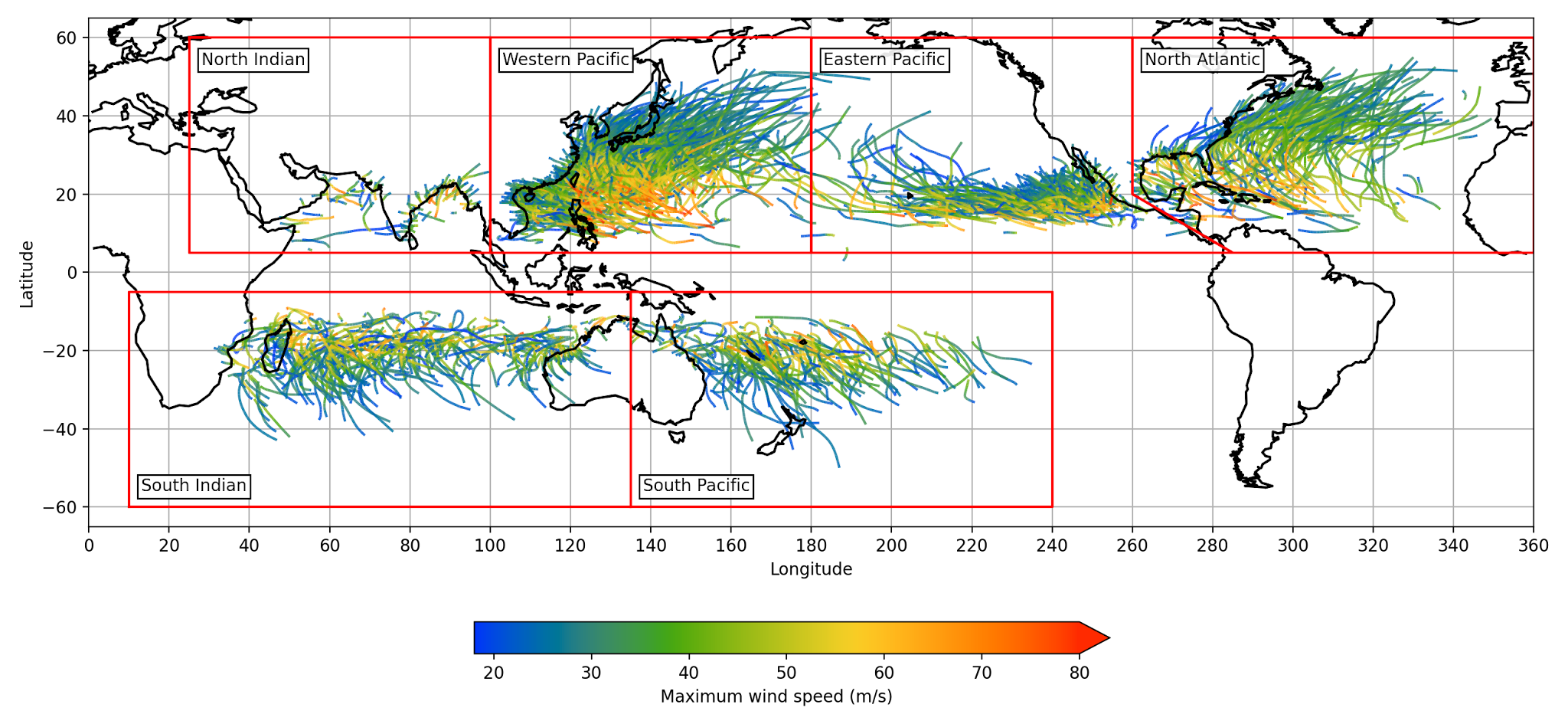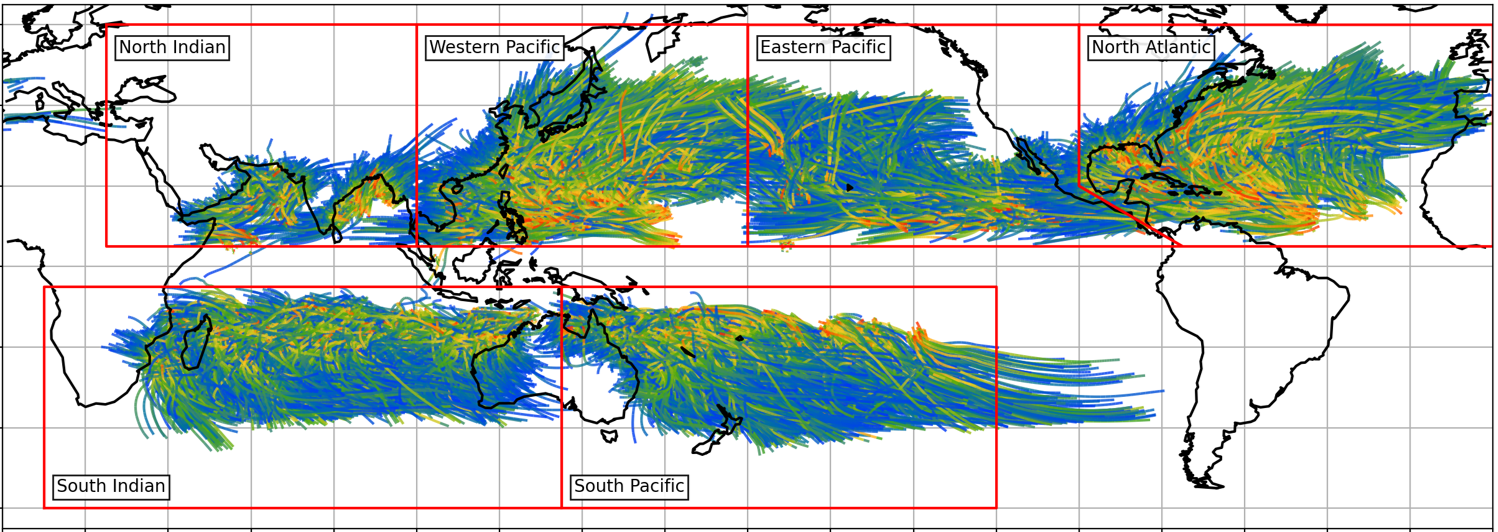Tropical Cyclone Risk

Assessing tropical cyclone risk on a global scale, given the infrequency of landfalling tropical cyclones and the short period of reliable observations, remains a challenge. Synthetic tropical cyclone datasets can help overcome these problems.
CGFI-affiliated researchers at Imperial College have created a new global dataset using IRIS, the ImpeRIal college Storm Model. IRIS is novel because, unlike other synthetic tropical cyclone models, it only simulates the decay from the point of lifetime maximum intensity. This minimises the bias in the dataset.
IRIS - The Imperial College Storm Model
IRIS takes input from 42 years of observed tropical cyclones and creates a 10,000 year synthetic dataset which is then validated against the observations. IRIS captures important statistical characteristics of the observed data. The return periods of the landfall maximum wind speed (1 minute sustained in m/s) are realistic globally. Climate model projections are used to adjust the life-time maximum intensity.
The map below shows the return period of cyclones making landfall simulated during the IRIS project. Learn more from Imperial College’s Grantham Institute. The data is also included in the Resilient Planet Data Hub’s Risk Viewer.




